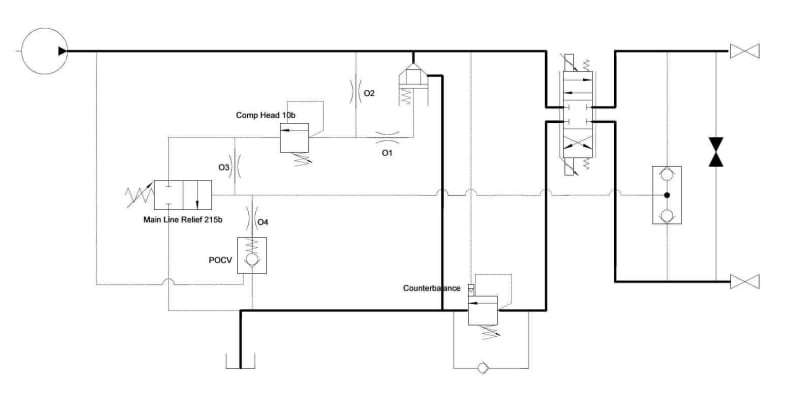HydraulicsGuy
Mechanical
- Feb 4, 2020
- 79
This weekend I had at the house a Vermeer Stump Grinder SC362. I was looking at the exposed hydraulics while the operator was taking a break. There was a 2-section gear pump. There were 4 functions: 1 steering cyl, 2 pivoting cyls, 1 up-down cyl, and I think 1 hydraulic motor for driving. There were manual control handles sticking out. The rest of the hydraulics was hidden inside an enclosure. I haven't dealt with any mobile applications at work yet, in the little over a year I've been working in hydraulics. Let's say ONLY ONE of the stump grinder's functions is being operated, and let's say it's being operated at less than full pump flow by a partial movement of the directional valve handle. Say the gear pump flow is 10 GPM. Say the function is only demanding 7 GPM by the operator partially moving the valve handle. 3 GPM has to be dumped. I'm guessing there has to be a feature of the hydraulic system that keeps the gear pump from going to relief valve setting as it dumps the excess flow (3 GPM) over the relief valve. I'm guessing that feature is built into the directional valve, where it dumps the excess flow at operating pressure rather than relief valve pressure, like a bypass-type flow control valve. Looking briefly at some directional valve literature, I have seen it implied that that's what happens, but what I saw wasn't clear to me at all. Is that what's happening, or is it something else? If that is the answer, my next question will be to point me to some directional valve literature that clearly explains/indicates this.

